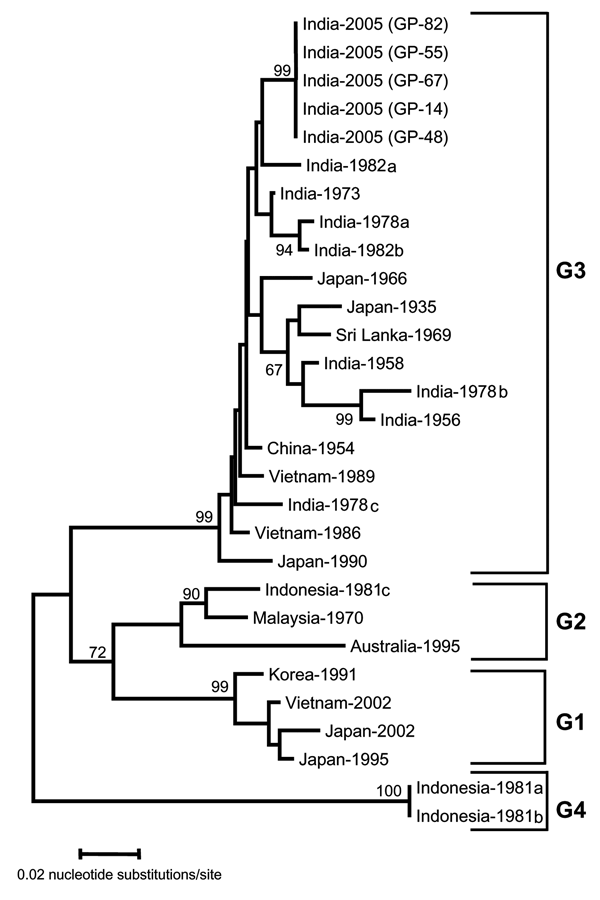Volume 12, Number 9—September 2006
Dispatch
Japanese Encephalitis Outbreak, India, 2005
Figure

Figure. Sequence phylogeny based on partial E gene sequence of Japanese encephalitis virus isolates from the Gorakhpur epidemic, with reference to other Southeast Asian isolates. The tree was generated by neighbor-joining method. Each strain is abbreviated with the country of origin, followed by the year of isolation. Bootstrap values are indicated at the major branch points.
Page created: November 18, 2011
Page updated: November 18, 2011
Page reviewed: November 18, 2011
The conclusions, findings, and opinions expressed by authors contributing to this journal do not necessarily reflect the official position of the U.S. Department of Health and Human Services, the Public Health Service, the Centers for Disease Control and Prevention, or the authors' affiliated institutions. Use of trade names is for identification only and does not imply endorsement by any of the groups named above.